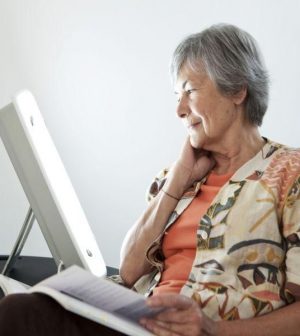- Strengthening Your Relationship: Practical Strategies
- Skip Storing This Everyday Product in the Fridge Door
- Green Tea + B3 Pairing May Boost Brain Health
- Navigating Your Midlife Crisis: Embracing New Possibilities
- City Raccoons Showing Signs of Domestication
- Mapping the Exposome: Science Broadens Focus to Environmental Disease Triggers
- One Week Less on Social Media Linked to Better Mental Health
- Your Brain Changes in Stages as You Age, Study Finds
- Some Suicide Victims Show No Typical Warning Signs, Study Finds
- ByHeart Formula Faces Lawsuits After Babies Sickened With Botulism
Midwinter Blues Could Be SAD: An Expert Guide to Treatments

Though the days are getting noticeably longer, if you’re feeling down this winter, you might have a form of depression called seasonal affective disorder, or SAD.
SAD, which typically begins as daylight shrinks in the fall, affects about 5% of U.S. adults. It’s more common in women than in men, and in people with a history of depression. It can cause sluggishness, sleeplessness, over-eating and weight gain, according to Dr. Riley Manion of Penn State Health Medical Group—Prospect, in Columbia, Pa.
Manion outlined a number of treatments for SAD.
One remedy is using a light therapy box that approximates sunlight by providing exposure to 10,000 lux of light. Patients sit 16 to 24 inches away from the box and absorb the rays for 20 to 30 minutes.
Manion suggested talking with your doctor before using a light therapy box, because it usually isn’t covered by insurance.
Another option is talk therapy.
People with SAD often avoid social activities that might make them feel better, but going to “counseling can help them develop more coping skills,” Manion said in a Penn State news release.
Therapists can help people with SAD change negative thought patterns and become more active socially.
Some people with SAD take extra vitamin D supplements to replace levels usually obtained from sunlight. And doctors sometimes prescribe antidepressants to people with more severe cases of SAD, Manion noted.
As the days get longer, symptoms will ease for many people. But Manion said it’s best to be ready before SAD season starts next fall.
Start when you set your clock back one hour in November. “Take a vitamin D supplement or start your light therapy,” she recommended.
More information
There’s more on SAD at the U.S. National Institute of Mental Health.
SOURCE: Penn State Health, news release, Feb. 3, 2022
Source: HealthDay
Copyright © 2025 HealthDay. All rights reserved.










